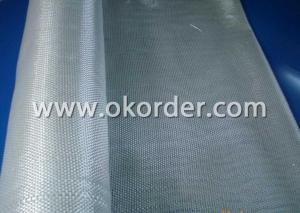Fiberglass, a material known for its versatility and strength, has become an integral part of various industries, including the fabrication of composite propane tanks. This article delves into the role of fiberglass in creating these tanks, exploring its unique properties and the process involved in manufacturing.
The Wonders of Fiberglass
Fiberglass, or glass-reinforced plastic (GRP), is a composite material made of a plastic matrix reinforced by fine fibers of glass. It’s a material that’s lightweight, strong, and corrosion-resistant, making it an excellent choice for propane tanks. The fibers provide tensile strength, while the plastic matrix binds the fibers together and gives the material its shape.
A Closer Look at Composite Propane Tanks
Composite propane tanks are becoming increasingly popular due to their numerous advantages over traditional steel tanks. They are lighter, more durable, and less prone to corrosion. This section will explore the benefits of using composite tanks and how fiberglass plays a crucial role in their construction.
The Manufacturing Process
The process of making a composite propane tank involves several steps, starting with the design and moving on to the actual fabrication. Here, we’ll take a look at the stages involved, from laying down the fiberglass to curing the tank.
1. Design and Planning
Before any material is cut or molded, the design of the tank must be carefully planned. Engineers consider factors such as the tank’s size, shape, and the pressure it will withstand.
2. Mold Preparation
Once the design is finalized, a mold is prepared. This mold will give the tank its final shape. It’s typically made from metal or composite materials and is designed to withstand the heat and pressure involved in the molding process.
3. Fiberglass Lay-up
The heart of the manufacturing process is the lay-up of fiberglass. Layers of woven or mat-like fiberglass are cut to the mold’s shape and size. These layers are then saturated with a resin, which acts as a binder, holding the fibers together.
4. Curing
After the fiberglass layers are in place and saturated with resin, the tank is moved to a curing area. Here, heat is applied to harden the resin, effectively setting the shape and structure of the tank.
5. Quality Control
Quality control is a critical part of the manufacturing process. Each tank is inspected for any defects, such as voids or cracks, which could compromise its integrity.
6. Finishing Touches
The final stage of production involves adding any necessary accessories, such as valves and fittings, and applying a protective coating to the tank’s exterior.
The Benefits of Fiberglass in Propane Tanks
Fiberglass offers several benefits that make it ideal for propane tanks. Its lightweight nature means that tanks are easier to transport and install. The material’s strength ensures that the tanks can withstand significant pressure, while its corrosion resistance protects the tank from the elements, prolonging its lifespan.
Safety Considerations
Safety is paramount when dealing with propane tanks. Fiberglass composite tanks are designed with multiple safety features to prevent leaks and ruptures. These features include pressure relief valves and robust construction that can handle the stress of everyday use.
The Future of Fiberglass in Propane Tanks
As technology advances, the role of fiberglass in propane tank fabrication is expected to grow. Innovations in materials and manufacturing processes will likely lead to even lighter, stronger, and more efficient tanks.
Conclusion
Fiberglass has revolutionized the fabrication of propane tanks, offering a lightweight, durable, and safe alternative to traditional steel tanks. Its unique properties and the meticulous manufacturing process involved have made composite propane tanks a popular choice for both residential and commercial use. As we look to the future, the potential for further advancements in this field is exciting, promising even better and safer propane storage solutions.

